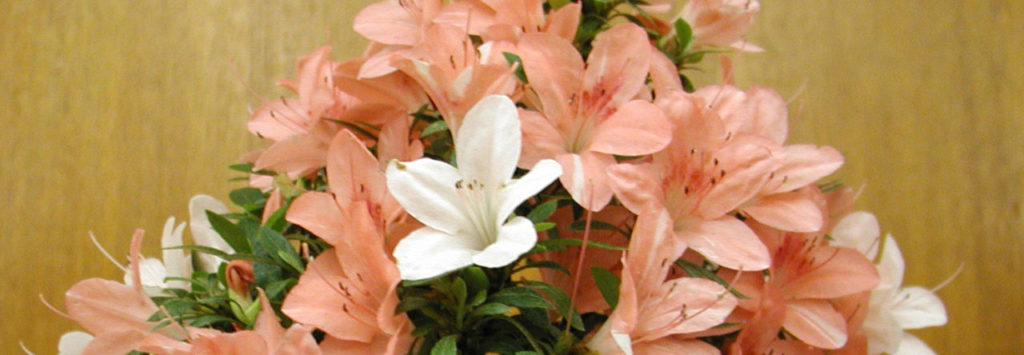Mesuki:
• Reduction of foliage so sun can get to the interior of branches to encourage growth
• At this point at the end of growing season the trees will be bushy, so to make sure the interior of the branches do not get shaded out and the growth stunted. You do mesuki!!!!
• You must keep enough foliage on the branches though to ensure the nutrient/water flow, and the tree is still getting energy through photosynthesis.
• Take off downward pointing branches, but not upward pointing ones – they will be wired, now or in the winter. Always have some extra branches in case some are broken during wiring.
Preparing for winter –
• Trees should be fertilized now using 5-5-5.
• Darren’s method – take off 1/4 soil from the top, add fresh soil, add 5/5/5/fertilizer in tea bags and cover with yamagoki. This keeps the fertilizer moist and the nutrients more available to the roots. Leave on until February.
• Fish emulsion is also a good fertilizer, but if given during April or May, flowers will fade more quickly when it blooms
Start thinking about show trees:
• Trees you are planning to show can be wired now
• Put more work into the trees you are planning to show
• If trees are slow to bloom stress them a little to encourage the buds to open. Withholding water – to some extent – stresses trees and is a useful technique as well
Struggling and sick trees:
• Repotting now was discouraged except in the most extreme cases
• Emergency repotting – Remove just one inch of roots from the bottom and almost nothing from the sides. Disturb roots as little as possible and do a proper repot of the tree in March.
• Several trees seemed to be suffering from root problems, likely caused by too much water, possibly combined with too much heat (Trees stop taking up water when pot temperature reaches +/- 85º)
• Subdue and Banrot were recommended as treatment – regular strength, 2 applications 2 weeks apart.
• If root issues persist alternate Subdue with Banrot for best results, but do not use continuously because they will kill beneficial bacteria (see below)
• Root treatments can kill all bacteria and beneficial mycorrhizae. Hydroguard Bacillus Root Inoculant and Great White Shark Mycorrhizae are good brands for repopulation of beneficial organisms – available on line or local stores selling to the cannabis cultivators
• Hormex is recommended for root growth and trees in distress. Darren uses it after repotting a tree for about one month after. 10 drops per gallon
A few other pointers for repotting satsuki azaleas:
• Darren now uses a mix of medium and small size Kanuma in repotting small to medium sized trees. He finds that water flows through the soil better when the sizes are combined rather than separated in layers.
• Before repotting, thoroughly clean the inside of the pot with disinfectant, such as Physan 20. Rinse well and then let dry in the sun for several days.
• You can also use a 50 % solution of hydrogen peroxide and water to disinfect your pots.
• Always rinse the pot out well and let dry for a day or two. This is especially important if the pot had a sick tree in it prior.

























 Gordon Deeg presented a program on tool maintenance at the last BASA meeting that was informative and comprehensive. This subject is rarely discussed, and his approach was lively and entertaining. He made what is a dry and technical subject both accessible and memorable.
Gordon Deeg presented a program on tool maintenance at the last BASA meeting that was informative and comprehensive. This subject is rarely discussed, and his approach was lively and entertaining. He made what is a dry and technical subject both accessible and memorable.



